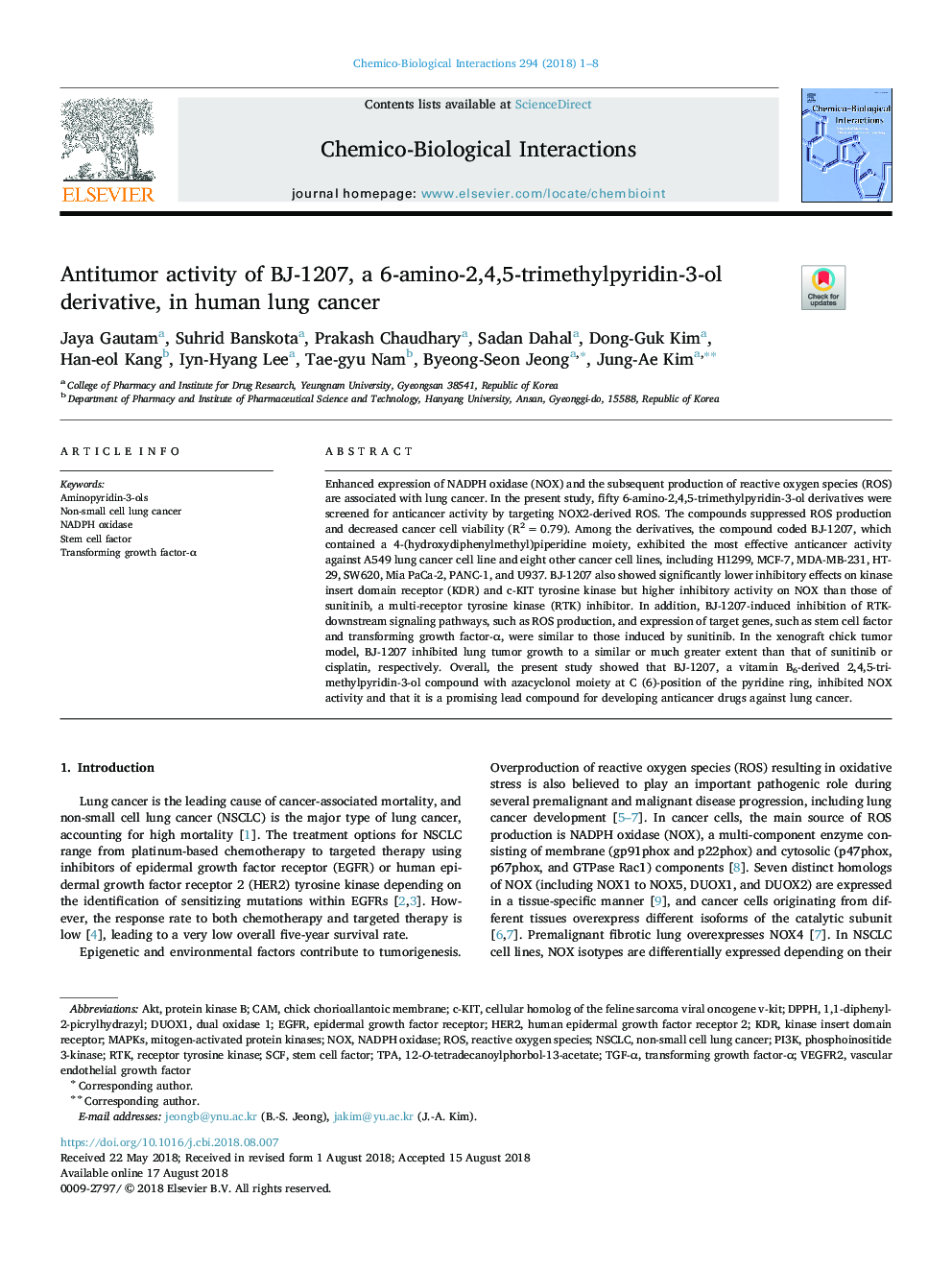| Article ID | Journal | Published Year | Pages | File Type |
|---|---|---|---|---|
| 8950204 | Chemico-Biological Interactions | 2018 | 8 Pages |
Abstract
Enhanced expression of NADPH oxidase (NOX) and the subsequent production of reactive oxygen species (ROS) are associated with lung cancer. In the present study, fifty 6-amino-2,4,5-trimethylpyridin-3-ol derivatives were screened for anticancer activity by targeting NOX2-derived ROS. The compounds suppressed ROS production and decreased cancer cell viability (R2â¯=â¯0.79). Among the derivatives, the compound coded BJ-1207, which contained a 4-(hydroxydiphenylmethyl)piperidine moiety, exhibited the most effective anticancer activity against A549 lung cancer cell line and eight other cancer cell lines, including H1299, MCF-7, MDA-MB-231, HT-29, SW620, Mia PaCa-2, PANC-1, and U937. BJ-1207 also showed significantly lower inhibitory effects on kinase insert domain receptor (KDR) and c-KIT tyrosine kinase but higher inhibitory activity on NOX than those of sunitinib, a multi-receptor tyrosine kinase (RTK) inhibitor. In addition, BJ-1207-induced inhibition of RTK-downstream signaling pathways, such as ROS production, and expression of target genes, such as stem cell factor and transforming growth factor-α, were similar to those induced by sunitinib. In the xenograft chick tumor model, BJ-1207 inhibited lung tumor growth to a similar or much greater extent than that of sunitinib or cisplatin, respectively. Overall, the present study showed that BJ-1207, a vitamin B6-derived 2,4,5-trimethylpyridin-3-ol compound with azacyclonol moiety at C (6)-position of the pyridine ring, inhibited NOX activity and that it is a promising lead compound for developing anticancer drugs against lung cancer.
Keywords
EGFRDUOX1KDRRTKTgf-αc-kitSCF12-O-tetradecanoylphorbol-13-acetateVEGFR2tPADPPHHER2PI3K1,1-diphenyl-2-picrylhydrazylMAPKsNOxROSAktNADPH oxidasetransforming growth factor-αdual oxidase 1CAMNSCLCNon-small cell lung cancerChick chorioallantoic membraneVascular endothelial growth factorStem Cell Factorphosphoinositide 3-kinaseprotein kinase Bmitogen-activated protein kinaseskinase insert domain receptorReactive oxygen speciesReceptor Tyrosine KinaseHuman epidermal growth factor receptor 2Epidermal growth factor receptor
Related Topics
Life Sciences
Environmental Science
Health, Toxicology and Mutagenesis
Authors
Jaya Gautam, Suhrid Banskota, Prakash Chaudhary, Sadan Dahal, Dong-Guk Kim, Han-eol Kang, Iyn-Hyang Lee, Tae-gyu Nam, Byeong-Seon Jeong, Jung-Ae Kim,
